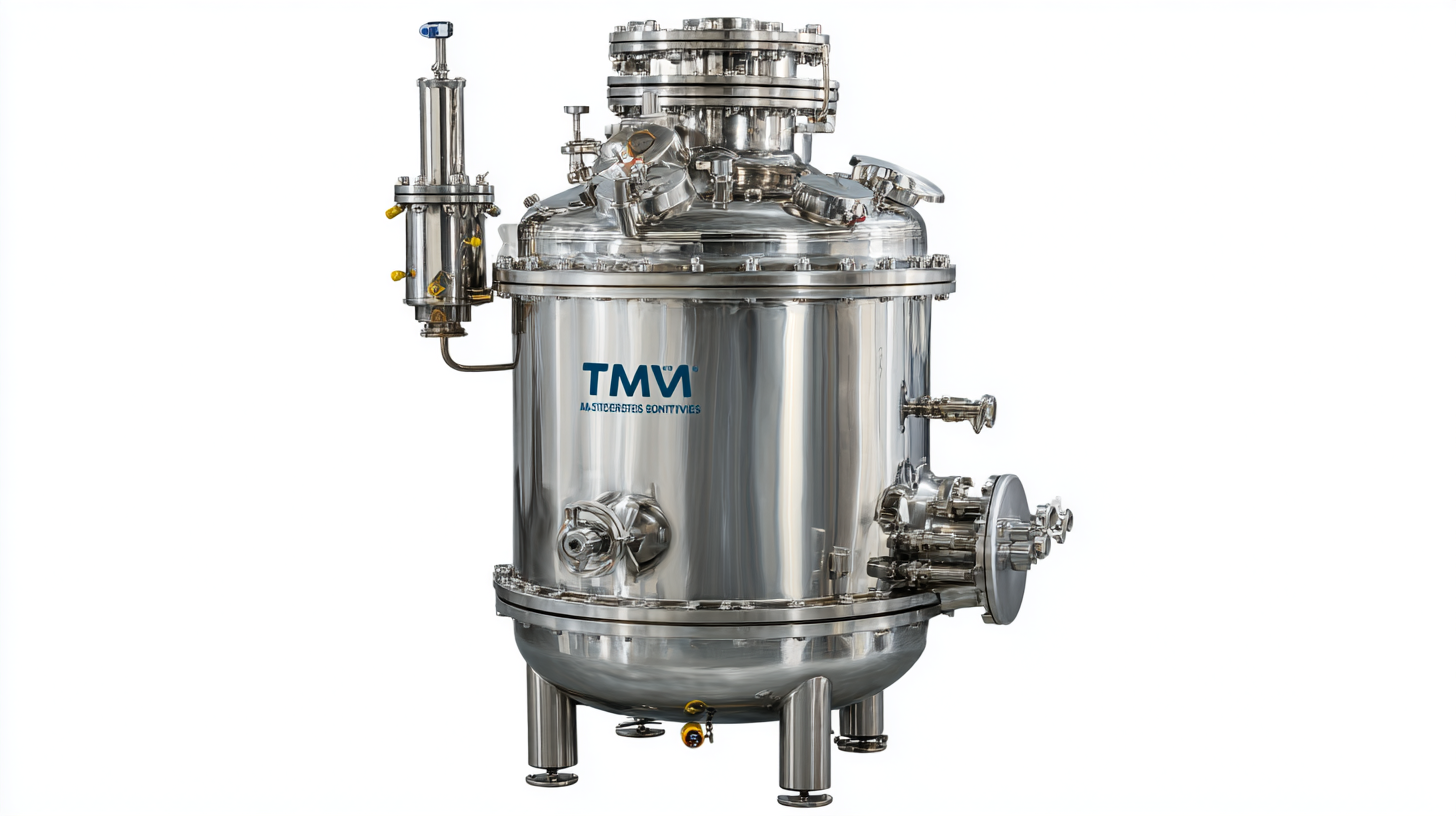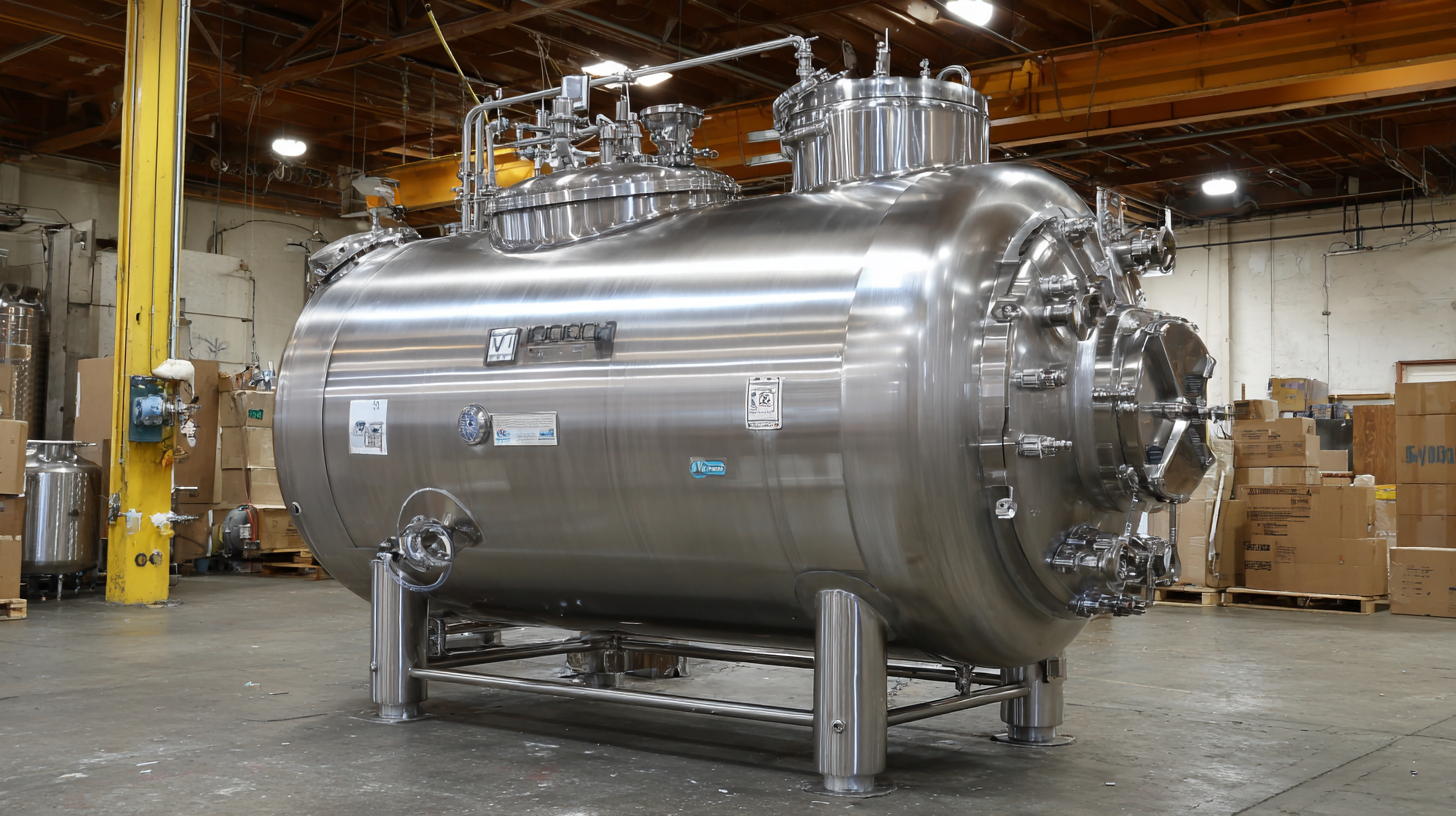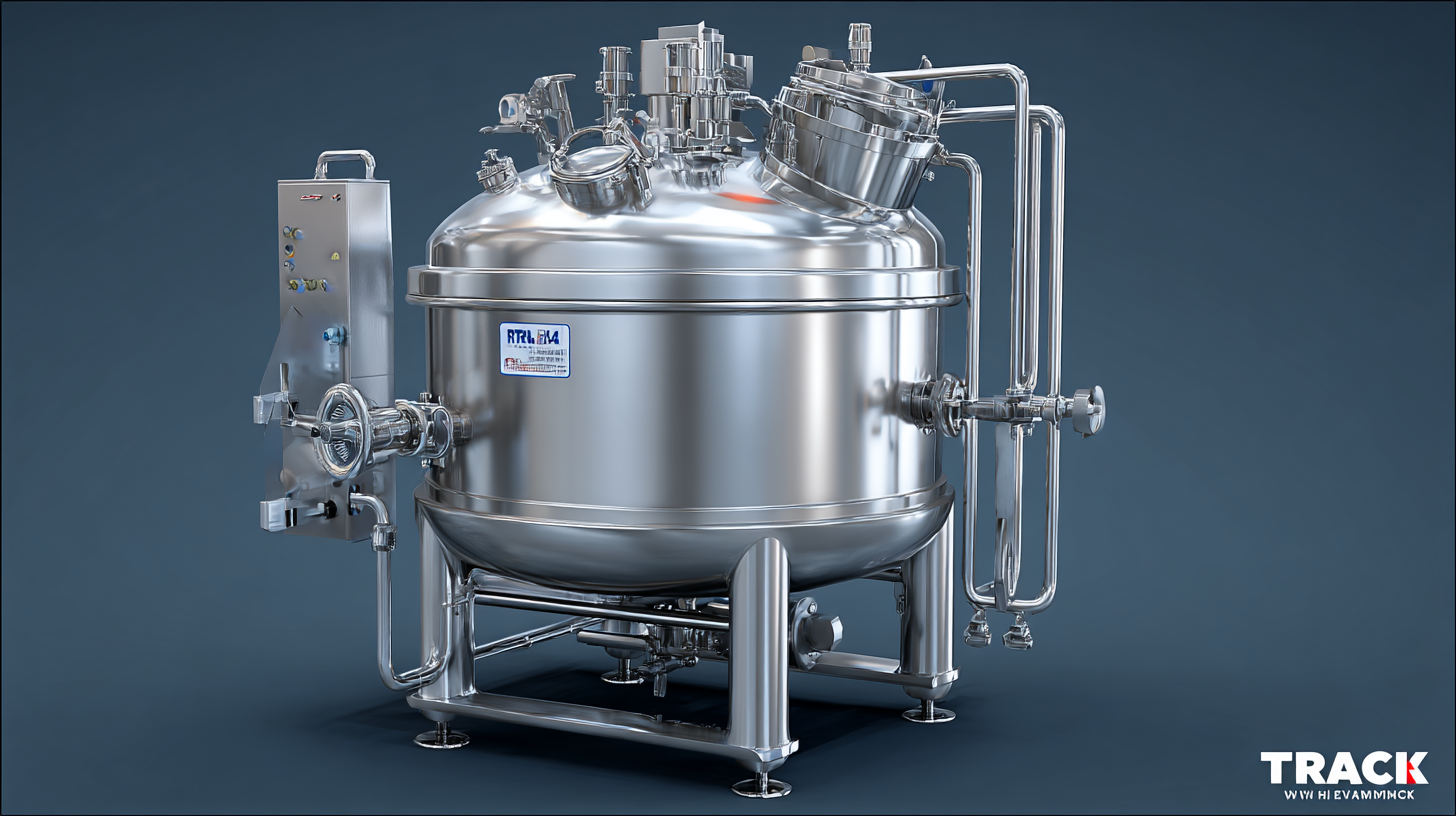
In the fast-evolving landscape of manufacturing and food processing, selecting the right equipment is crucial for maintaining efficiency and quality. As we approach 2025, the demand for durable and reliable equipment has never been higher, especially when it comes to the Stainless Steel Mixing Vessel. This essential tool plays a pivotal role in ensuring that products are mixed uniformly and efficiently, which directly impacts the quality of the final outcome. With numerous options available in the market, understanding the latest trends and innovations in Stainless Steel Mixing Vessels can help businesses make informed decisions. Whether you are a small startup or an established enterprise, this guide will navigate you through the key factors to consider, helping you choose the best Stainless Steel Mixing Vessel that aligns with your operational needs and future growth.

When selecting a stainless steel mixing vessel for your business, several critical factors must be considered to ensure you make an informed decision that aligns with your operational needs and industry trends. One primary factor is the type of stainless steel used; 304 and 316 stainless steels are common materials, with 316 offering superior corrosion resistance, making it a preferred choice in industries such as pharmaceuticals and food processing. According to a 2023 market analysis by Grand View Research, the global demand for stainless steel mixing vessels is projected to grow at a CAGR of 5.6% from 2024 to 2030, indicating rising standards and technological advancements in material quality.
Another significant consideration is the vessel design and size, which should align with your production capacity and workflow. The vessel's shape, whether vertical or horizontal, can impact the mixing efficiency and quality of the outcome. A recent report from Research and Markets highlighted that optimal mixing vessel design can reduce production times by up to 30% while improving product consistency. Additionally, integration capabilities with automation systems are becoming increasingly vital, given that nearly 60% of manufacturers are shifting towards more automated processes to enhance efficiency and reduce human error. Therefore, evaluating these factors comprehensively will not only streamline your production but also enhance overall product quality.
| Factor | Description | Importance Level | Current Trends (2025) |
|---|---|---|---|
| Material Grade | Consider the specific grade of stainless steel (e.g., 304, 316) for durability and corrosion resistance. | High | Increased focus on higher grades for enhanced longevity. |
| Size and Capacity | Determine the volume needed based on production requirements. | Medium | Preference for larger vessels to accommodate scalability. |
| Mixing Technology | Evaluate the mixing type required (e.g., impeller, magnetic stirrer). | High | Trend towards smart mixing technologies for efficiency. |
| Compliance Standards | Check adherence to industry regulations (e.g., FDA, ISO). | High | Greater emphasis on compliance in procurement processes. |
| Cost | Consider the budget allocated for purchasing a mixing vessel. | Medium | Investment in quality over low-cost options is trending. |
| Customization Options | Assess availability of custom designs to fit specific needs. | Medium | Increased demand for tailored solutions in production. |
As the manufacturing landscape evolves, the design of stainless steel mixing vessels is adapting to meet new demands and challenges in various industries. Emerging trends for 2025 indicate a significant shift towards eco-friendly materials and energy-efficient technologies. According to a recent report by MarketsandMarkets, the global stainless steel market is expected to reach USD 210 billion by 2025, driven in part by the growing focus on sustainable manufacturing practices. This trend encourages the use of recyclable materials and processes that minimize environmental impact, making it essential for businesses to consider these factors when selecting mixing vessels.
Another important trend is the integration of smart technologies into mixing vessel designs. The adoption of IoT (Internet of Things) in manufacturing is projected to grow by 23% annually until 2025, as reported by Gartner. This increased connectivity allows for real-time monitoring and data analysis, enhancing operational efficiency and reducing downtime. Companies are now seeking vessels that offer advanced features such as automated mixing controls and predictive maintenance capabilities. By investing in these cutting-edge designs, businesses can not only improve their production processes but also stay competitive in an increasingly tech-driven market.
When selecting a stainless steel mixing vessel for your business in 2025, understanding the material quality is critical. The quality of stainless steel significantly affects the vessel's performance, durability, and resistance to corrosion, which are essential factors for any mixing operation. Different grades of stainless steel, such as 304 and 316, are commonly used for manufacturing mixing vessels. Grade 304 is often sufficient for less corrosive environments, while grade 316 offers superior resistance to saltwater and more aggressive chemicals, making it ideal for industries such as pharmaceuticals and food processing.

In addition to the grade of stainless steel, the finish of the vessel also plays a vital role in maintaining hygiene and ease of cleaning. A smooth surface reduces the risk of contamination and facilitates a quicker cleanup. When comparing vessels, look for options with electropolished finishes, as these not only enhance corrosion resistance but also minimize surface imperfections. Overall, an informed evaluation of material quality will help you select a mixing vessel that meets your industry standards and operational demands effectively.
When selecting a stainless steel mixing vessel for your business, customization options can significantly enhance productivity and ensure your operations run smoothly. One of the foremost considerations is the size and capacity of the vessel. Tailoring these elements to fit the specific needs of your production processes allows for optimal mixing efficiency and reduces downtime during product changeovers.
Moreover, customization goes beyond just size — features such as specialized mixing blades, insulation options, and access ports should be considered. Custom mixing blades can accommodate various materials and mixing speeds, thereby improving the quality of the final product. Insulated vessels can maintain temperature, essential for processes requiring thermal control. Additionally, strategically placed access ports facilitate easier cleaning and maintenance, thus minimizing operational disruptions and ensuring compliance with industry standards. By focusing on such features, businesses can create a mixing environment that not only meets their immediate needs but also adapts as their operations grow.
When investing in high-quality stainless steel mixing vessels, a thorough cost-benefit assessment is crucial for businesses aiming to optimize their operations in 2025. According to a recent industry report by MarketsandMarkets, the global mixing equipment market is projected to reach $8.56 billion by 2025, driven by the increasing demand for efficiency and versatility in production processes. High-quality vessels not only enhance product quality but also significantly reduce maintenance costs over time, offering a substantial return on investment.
Moreover, the durability of stainless steel mixing vessels contributes to their long-term cost-effectiveness. Research indicates that businesses using robust vessels experience a 20%-30% decrease in replacement costs compared to those utilizing lower-grade materials. Additionally, advanced features such as improved insulation and energy-efficient designs can further lower operating expenses. By considering these factors in their purchasing decisions, companies can ensure that their investments align with industry trends and contribute positively to their bottom line.

